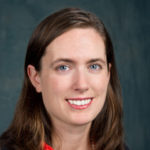
Dr. Abigail Clarke-Sather
University of Minnesota Duluth
Dr. Abigail Clarke-Sather, Assistant Professor at University of Minnesota Duluth’s Mechanical and Industrial Engineering department, is working with Electrical Engineering undergraduate student (’23) Angela Martini on using stitched sensors to monitor human body comfort and function of garments in space.
This research is an extension of Dr. Clarke-Sather's work with Mechanical Engineering graduate student (’20) Michael Weber on sensor-enabled garments for children with autism1 and for mothers and infants in the neonatal intensive care unit.2 Ms. Martini is researching both signal drift in conductive thread stitched sensors due to material and electrical changes and the applicability and reliability of stitched sensors for measuring human vital signs in space.
[1] M. Weber et al., “Development of a Pressure Measuring Garment to Understand How to Quantify Compression,” in Proceedings of the 2020 Design of Medical Devices Conference, Minneapolis, Minnesota USA, April 2020, p. # forthcoming.
[2] M. Weber and A. R. Clarke-Sather, “Proof of Concept: Pressure Sensor for Tracking of Infant-Mother Kangaroo Care Durations,” in Proceedings of the 2019 Design of Medical Devices Conference, Minneapolis, Minnesota USA, April 2019, p. # DMD2019-3311.

Dr. Alec Habig
University of Minnesota Duluth
Dr. Alec Habig is a professor in the Department of Physics and Astronomy at University of Minnesota Duluth, teaching both undergraduate and graduate students. He studies cosmic rays and neutrinos in the fun hybrid field of Particle Astrophysics, with detectors in both deep underground labs and at Fermilab.
Dr. Habig's research with includes MINOS, MINOS+, NOvA, HALO, and DUNE neutrino experiments. He has also worked on the Super-Kamiokande (still running) and MACRO (turned off in December 2000) experiments.
Dr. Habig is also participating in SNEWS (Supernova Early Warning System) and its upgrade SNEWS2.0, which is a coincidence monitor of many neutrino experiments to provide early warning of a supernova in our galaxy.
Dr. Habig is University of Minnesota Duluth's representative to the Minnesota Space Grant Consortium.
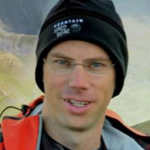
Dr. Carl Isaacson
Bemidji State University
Dr. Carl Isaacson has been the Affiliate Director of the Minnesota Space Grant Consortium at Bemidji State University since 2014 and works at the University's Center of Environmental, Economic, Earth, and Space Studies.
Dr. Isaacson is a chemist whose primary research interest is improving water quality. Over his career he has worked on both organic and inorganic environmental contaminants from both a chemical and toxicological perspective. He teaches classes including environmental toxicology, environmental microbiology, environmental chemistry, waste water treatment, and introductory-level environmental science.
Dr. Isaacson is currently working on projects to determine the effect surface water sulfate concentration has on mercury methylation potential and to determine effects of anthropogenic surface water inputs on yellow perch development. He has also recently submitted proposals to work on remote sensing techniques to determine sources of water impairments and the success of amphipod stocking in wetlands across Northern Minnesota.
Dr. Isaacson is also involved in outreach supported by the Minnesota Space Grant Consortium, such as Bemidji State University’s "Share the Future" event, an outreach activity aimed at Northern Minnesota middle school students. He is active in the community, and is a member of the Turtle River Watershed Association.
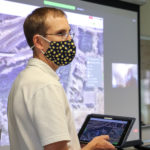
Dr. Carl M. Sack
Fond du Lac Tribal and Community College
Dr. Carl M. Sack is the Geographic Information Systems Program Coordinator at Fond du Lac Tribal and Community College.
Dr. Sack teaches GIS and Remote Sensing courses and supervises student research internships with NASA and other agencies. His current project work includes semi-automated habitat mapping in the St. Louis River Estuary on Lake Superior and expanding the use of drones in teaching and fieldwork.

Dr. Cindy Blaha
Carleton College
Dr. Cindy Blaha is the George H. and Marjorie F. Dixon Professor of Physics & Astronomy at Carleton College in Northfield, Minnesota.
Dr. Blaha obtained her B.S. and Ph.D. in physics and astrophysics at the University of Minnesota and has been teaching and doing research with students at Carleton since 1987. Her astrophysics research centers on a galaxy-wide census of emission-line regions in spiral and dwarf galaxies in the Local Group.
Dr. Blaha is also a Co-PI in the eAlliance project, an NSF ADVANCE program aimed at forming peer-mentoring groups for women faculty in physics and astronomy.

Dr. Daniel J. Stevens
University of Minnesota Duluth
Dr. Dan Stevens, an assistant professor in the Department of Physics and Astronomy at University of Minnesota Duluth, is UMD's representative to the Minnesota Space Grant Consortium. His research group uses ground- and space-based observations to characterize eclipsing binary stars and transiting exoplanets to high precision and accuracy, using them to study open problems in exoplanetary, stellar, and galactic astrophysics.
Dr. Stevens leads the eclipsing binary investigations for the KELT transiting exoplanet survey. He is also a member of the science teams for the Landolt and MISHAPS collaborations, as well as the NEID science team and the TESS Single Transit Planet Candidate Working Group. Dr. Stevens previously led the data reduction and exoplanet-candidate vetting efforts for KELT-North.
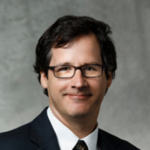
Dr. David Forliti
University of St. Thomas
Dr. David Forliti is an Associate Professor in the Mechanical Engineering Department at the University of St. Thomas. Dr. Forliti’s research program focuses on propulsion-related fluid mechanics including flow instability, turbulent shear flows, and multiphase flows. One area of particular emphasis is on the flow-acoustic wave interactions which drive combustion instabilities in propulsion and energy applications.
Dr. Forliti received his Ph.D. in mechanical engineering from the University of Minnesota, his M.S. in mechanical engineering from Florida State University, and his B.S.M.E. from the University of Minnesota. Dr. Forliti has been at St. Thomas since 2015. Before that, he worked at the Air Force Research Lab at Edwards Air Force Base working on liquid rocket engine research and development.
Dr. Forliti's research can be found at his website:

Dr. Demoz Gebre-Egziabher
University of Minnesota Twin Cities
Director of NASA's Minnesota Space Grant Consortium
Dr. Demoz Gebre-Egziabher is a professor in the Department of Aerospace Engineering and Mechanics at the University of Minnesota Twin Cities.
Dr. Gebre-Egziabher teaches courses in aerospace systems and directs a research lab focusing on the design of multi-sensor navigation and attitude determination systems for aerospace vehicles.
He is the past secretary of the Satellite Division of the Institute of Navigation (ION) and has also served as associate editor of navigation for the IEEE Transactions on Aerospace and Electronic Systems. He is the current director of the NASA's Minnesota Space Grant Consortium.
Dr. Gebre-Egziabher is an associate fellow of the American Institute of Aeronautics and Astronautics (AIAA). From 1990 to 1996 he was an officer in the United States Navy where he served as a system engineer on the staff of the Naval Sea Systems Command division of naval reactors in Washington, D.C.
Dr. Gebre-Egziabher holds a B.S. in Aerospace Engineering from the University of Arizona, a M.S. in Mechanical Engineering from George Washington University, and a Ph.D. in aeronautics and astronautics from Stanford University. He is a registered professional mechanical engineer and a licensed private pilot with an instrument rating.
Contact: gebre@umn.edu
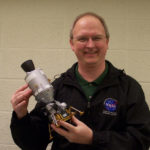
Dr. James Flaten
University of Minnesota Twin Cities
Associate Director of NASA's Minnesota Space Grant Consortium
Dr. James Flaten is a contract professor in the Department of Aerospace Engineering and Mechanics at the University of Minnesota Twin Cities.
Dr. Flaten serves as the Associate Director of the Minnesota Space Grant Consortium (MnSGC), a NASA higher-education program which involves state-wide promotion of all-things-NASA-related. He has taught freshman seminars at the University of Minnesota - Twin Cities on high-altitude ballooning, high-power rocketry, quadcopters, and (mock) picosatellites called CubeSats.
Dr. Flaten works with college students and faculty on out-of-class NASA-related projects including building and flying miniature spacecraft into the stratosphere using weather balloons and developing science payloads for NASA suborbital rocket flights. He helps organize intercollegiate challenges on topics ranging from robotics to drones to stratospheric/eclipse ballooning. He works with Tripoli MN, a high-power rocketry club, to run the annual Space Grant Midwest High-Power Rocketry Competition.
One of his ballooning team's emphases, dating back to 2017 and being revisited in 2023 and 2024, is developing and flying experiments and video telemetry equipment during solar eclipses. Dr. Flaten also conducts teacher workshops and outreach activities at local schools and for the general public on aerospace, astronomy, physics, and engineering.
Contact: flate001@umn.edu
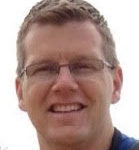
Dr. John Zobitz
Augsburg University
Dr. John Zobitz is an Associate Professor in the Department of Mathematics, Statistics, and Computer Science at Augsburg University in Minneapolis, Minnesota, where he has worked since 2007.
Dr. Zobitz's research involves the acquisition and processing of data collected through NASA. Primarily this includes ground-based terrestrial earth observation data (eddy covariance data of net carbon dioxide exchange and associated environmental measurements), and satellite reflectance data from MODIS.
Applications of these data include visualization of terrestrial carbon exchange, parameterization of process-based ecosystem models using a data assimilation framework, and development of new algorithms for the processing of remote sensing data.

Dr. Keith Stein
Bethel University
Dr.Keith Stein is a professor in the Physics & Engineering Department at Bethel University in Arden Hills, Minnesota.
Dr. Stein has a Ph.D. in Aerospace Engineering, with past research activities focusing on the modeling of parachute dynamics and fluid-structure interactions.
Dr. Stein is currently involved in student-faculty studies of compressible flows and shock waves, including work on high-speed video imaging techniques.
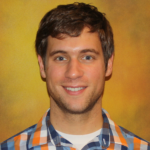
Dr. Ryan Terrien
Carleton College
Dr. Ryan Terrien is an assistant professor in the Physics and Astronomy Department at Carleton College in Northfield, Minnesota.
Dr. Terrien works on instrumentation and techniques for high-precision Doppler spectroscopy and exoplanet detection, including the Habitable Zone Planet Finder (HPF) and NEID spectrographs. He also studies the spectroscopic characterization of low-mass stars. His current collaborations with students involve the analysis of HPF spectra of low-mass stars to better understand their chemical properties and magnetic activity.
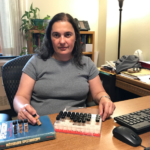
Dr. Thelma Berquo
Concordia College Moorhead
Dr. Thelma Berquo is a faculty member in the physics department at Concordia College in Moorhead, Minnesota.
She has been working with magnetic characterization of geological and lab prepared iron oxides samples.
The iron phases are present on Earth and are analogs of phases on Mars’s surface. Mossbauer spectroscopy is used to investigate the contribution of particle size and iron substitution on the iron phases.
Dr. Berquo is also helping run various Minnesota Space Grant Consortium Intercollegiate Challenges.

Prof. Eric Kuha
Leech Lake Tribal College
Professor Eric Kuha, M.S., is an instructor of Information Technology at Leech Lake Tribal College in Cass Lake, Minnesota. He teaches by giving his students firsthand experiences by using a hands-on approach to learning with the use of cutting-edge technology.
Professor Kuhn first studied at Bemidji State University where he earned his bachelor's degrees in philosophy and writing and a master’s degree in English. In the spring of 2020, he completed a three-year Master of Computer Science program at the University of Minnesota.
At Leech Lake Tribal College, his students' work is generally tech-related. For the rocket team, he coordinates and directs the construction of their electronic instrumentation, such as the altimeters, cameras, explosive charges, and other sensors.
Over the years, they've made a number of hands-on adjustments to their rockets' designs. For example, the rocket team at LLTC made use of a weather sensor array in their first few rockets that was built from scratch. More recently, their rockets have been making use of a 3D-printed nosecone so that they can socket a camera in the nose. The LLTC rocket team is the only team out of their competition to use a forward-facing camera which affords some pretty spectacular footage on the way down.

Prof. Erick Agrimson
St. Catherine University
Professor Erick Agrimson, M.S., uses high-altitude weather balloons (HABs) as a delivery method to send up payload boxes with varied instrumentation to study the stratosphere. As a part of physics department at St. Catherine University in Saint Paul, Minnesota, his team of collaborative undergraduate researchers select HAB-related projects to work on.
A current item of interest is the investigations into the Regener- Pfotzer Maximum (the R-P Max) — a region of increased radiation counts in the stratosphere.
Agrimson holds a B.S. (with a concentration in space physics) from Augsburg University, an M.S. from the University of Iowa, and has completed advanced coursework toward a Ph.D. in plasma physics.
He has served as affiliate director for St. Catherine University’s portion of the Minnesota Space Grant Consortium since 2013. Professor Erick Agrimson also works with 4-H youth around the state, particularly in aerospace projects, having supervised over 500 rocket launches in nearly 25 years of adult leadership, and overlapping ten years in his role as affiliate director of Minnesota Space Grant.